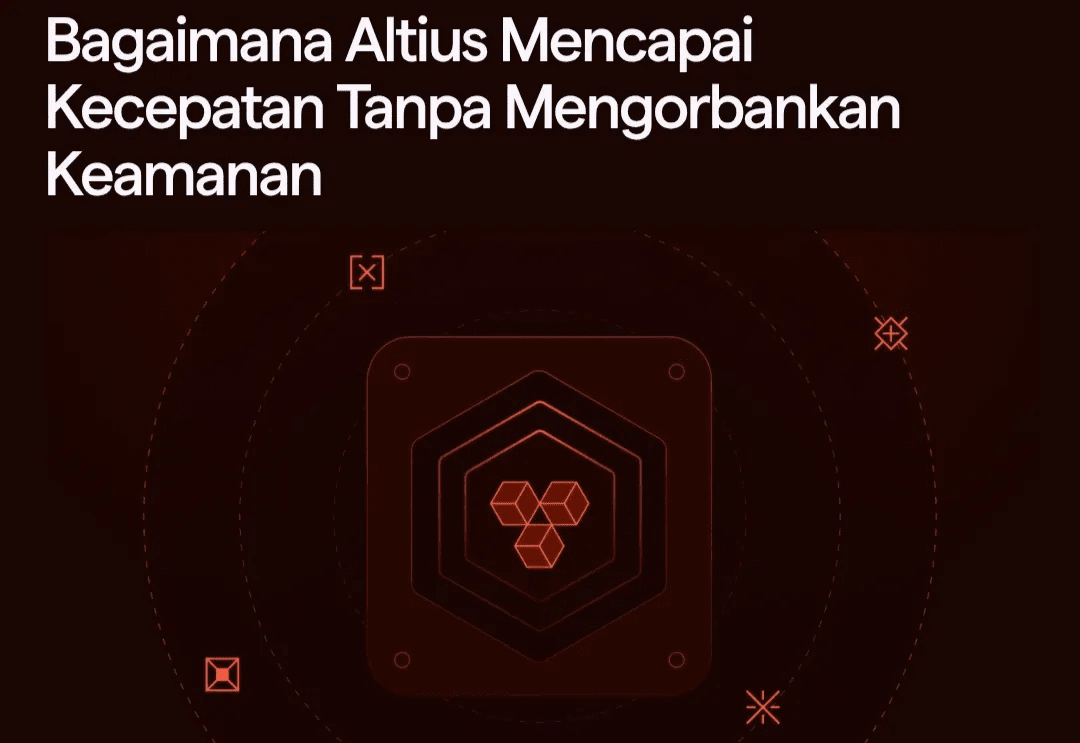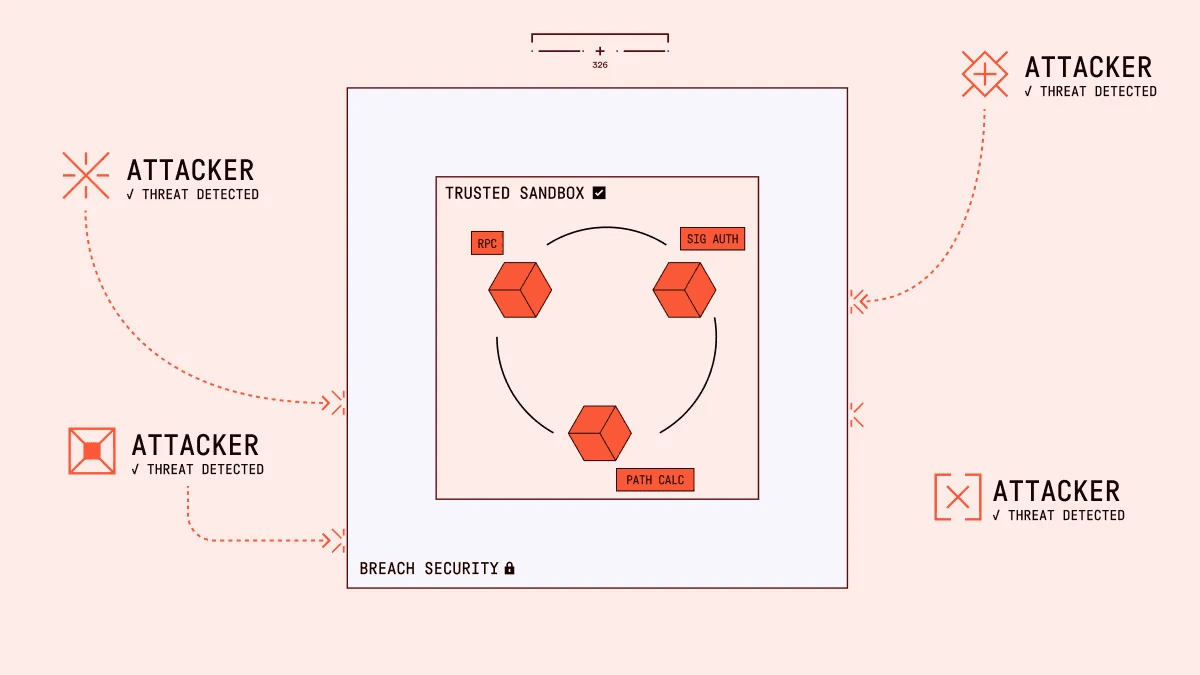
Altius is a high-performance VM-agnostic execution layer. We started with an EVM implementation by reworking parallel transaction processing within the existing Ethereum security model, allowing for significant throughput improvements without sacrificing the decentralization and security guarantees that make blockchain technology valuable.
One of
the most common questions we receive — from developers, partners, or node operators — is this:
"You make everything faster. But how do you keep everything safe and stable?"
This is a reasonable question.
In the blockchain space where most scaling solutions prioritize throughput at the expense of trust assumptions or security budgets, we want to take a different path.
At Altius, we are not just speeding up execution — we are redesigning to maintain Ethereum-class security while enabling new levels of performance.
Imagine Formula 1: uncontrolled speed is an accident waiting to happen. Here is a description of how we built Altius with safety, determinism, and resilience in mind — and why it matters for chains, roll-ups, and the applications running on top.
🛡 1. Secure by Design: Minimal Surface, Maximum Legacy

At its core, Altius starts from the Reth Ethereum client for security and safety. We do not touch the network or consensus. That is intentional.
By staying within the execution limits of Ethereum, we:
• Inherit full security posture from upstream Ethereum client
• Avoid exposure to consensus-level or RPC attacks
• Operate only on validated data and checked signatures
This is what we call a trusted sandbox — a fortified execution zone that runs after all the heavy lifting around consensus and validation has been done.
"Security in blockchain is not something you can add later. Security must be a fundamental aspect of its architecture. That’s why we chose to embed security in Reth as an early step rather than build a separate execution client — we can inherit Ethereum's proven security model while focusing our innovation on what matters most." — Anit Chakraborty, CTO
Why this matters: We are not recreating Ethereum's security — we are building on it, safely and modularly.
⚙️ 2. Transaction Parallelism: Deterministic Execution at Scale
Parallel execution is often seen as a challenge because it can lead to race conditions or inconsistencies in smart contract execution. However, with Altius, this is handled differently.
We employ a technique called Deterministic Optimistic Concurrency Control (OCC):
• Transactions are executed speculatively in parallel
• If conflicting state access is detected, we deterministically abort and re-execute only that part
• This guarantees determinism and correctness, consistent with Ethereum specifications
Technical Example:
Why this matters: You get parallel execution throughput without introducing nondeterminism or status inconsistency. // Simplified example of Altius's deterministic abort-retry mechanism
fn execute_transaction_batch(txs: Vec) -> StateChanges {
let mut state_changes = StateChanges::new();
let mut retry_queue = Vec::new();
// First pass: parallel optimistic execution
let results = txs.par_iter().map(|tx| {
let access_set = predict_state_access(tx);
let execution = execute_speculatively(tx, access_set);
(tx, execution)
}).collect();
// Second pass: conflict detection and resolution
for (tx, execution) in results {
if has_conflicts(execution, &state_changes) {
retry_queue.push(tx);
} else {
state_changes.apply(execution);
}
}
// Third pass: serial re-execution of conflicting txs
for tx in retry_queue {
let execution = execute_serially(tx, &state_changes);
state_changes.apply(execution);
}
state_changes
}
It's like giving your chain some lanes — with deterministic traffic control ensuring every transaction ends up exactly where it should, every time.
🧩 3. Modular VM Architecture for Maximum Flexibility
We built our first parallel execution engine as a standalone module within Reth, with a clear separation between:
SSA (Static Single Assignment) Transformation for EVM
Concurrency Logic and Conflict Detection
Execution Scheduling and Resource Allocation
This modularity makes each part easier to:
Auditing for security vulnerabilities
Testing (including property-based fuzzing)
Swap or upgrade independently as the EVM evolves
And we do not stop there.
Our long-term goal: to engage independent third-party auditors and conduct upstream changes, so the entire ecosystem benefits — and you don’t have to trust us blindly.
Why this matters: Security is not just something you build. Security is something that can be verified.
🛠 4. Smart Contract Security: Deep Defense Execution Model
We treat every smart contract — regardless of its VM — as its own application.
Just like applications on your smartphone cannot drop the OS, our execution stack ensures:
• Independent execution context
• Memory and computation isolation
• Runtime sandbox
• Deterministic gas measurement for each transaction
We are also actively exploring formal verification for our core components. Not just "we've tested it a lot," but "we've proven it works under every condition."
🏁 Conclusion: A Safer Way to Scale
We are entering a new era of modular blockchains, roll-ups, and hyper-custom VMs.
However, scaling is not just about doing more — but doing it safely.
At Altius, our goal is to provide developers and networks with the tools to scale execution without compromise:
• No consensus assumptions violated
• Not exposing sensitive I/O layers
• No determinism that can be compromised
Just speed, security, and stability — by design.
🤝 If you are wondering how we handle security in Altius, now you know. And if you still have questions — we are always happy to discuss.
This is just the beginning. Stay tuned for in-depth discussions, technical infographics, and formal specifications in upcoming posts.
📬 Want to collaborate or explore integration? Contact our team at [email protected] #Altius